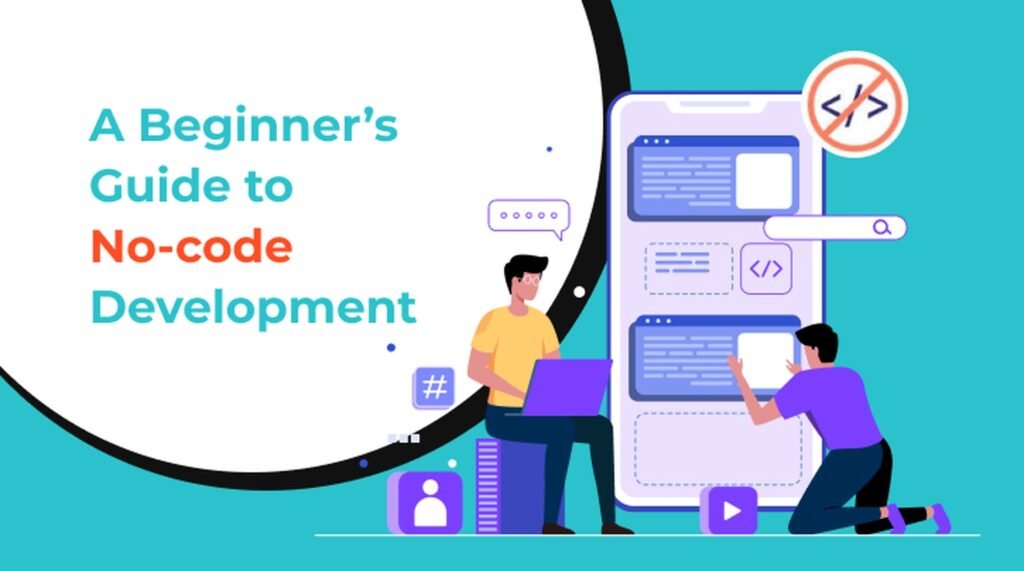In today’s fast-paced digital landscape, businesses and individuals are constantly looking for ways to streamline development processes, reduce costs, and launch products faster. Enter No-Code and Low-Code platforms—game-changing tools that are transforming the way we build websites, apps, and software solutions. Whether you’re a startup founder, a small business owner, or just someone curious about tech, this guide will help you understand the basics of no-code and low-code development, their differences, and how to get started.
What Are No-Code and Low-Code Platforms?
No-Code and Low-Code platforms are visual development tools that allow users to create applications without writing traditional code. These platforms empower non-developers (also known as “citizen developers”) to bring their ideas to life using intuitive drag-and-drop interfaces, pre-built templates, and automation features.
No-Code Platforms
- Designed for complete beginners with zero coding knowledge.
- Ideal for building simple apps, websites, and workflows quickly.
- Focuses on a visual development approach, leveraging drag-and-drop components.
- Examples: Webflow, Bubble, Wix, and Zapier.
Low-Code Platforms
- Offers a blend of visual development with the ability to write code for customization.
- Targets users who have some technical skills or are comfortable with basic coding.
- Great for creating more complex applications that require backend integrations or custom logic.
- Examples: OutSystems, Mendix, Appian, and Microsoft Power Apps.
Low Code vs. No Code: Key Differences
| Feature | No-Code Platforms | Low-Code Platforms |
|---|---|---|
| Target Audience | Non-developers, entrepreneurs, marketers | Developers, IT professionals, tech-savvy users |
| Customization Level | Limited to pre-built templates and plugins | High, with custom coding capabilities |
| Development Speed | Extremely fast for simple projects | Fast, but with more flexibility |
| Use Cases | Landing pages, small business websites, MVPs | Enterprise applications, internal tools, B2B solutions |
| Learning Curve | Minimal, beginner-friendly | Moderate, requires some coding skills |
Tip: If you’re looking to quickly build an MVP (Minimum Viable Product) or a simple automation workflow, go for a no-code platform. If you need deeper customization and integrations, consider a low-code platform.
Why No-Code/Low-Code Matters for Digital Transformation
- Faster Time-to-Market: Launch your product faster by eliminating the need for complex coding. Get your MVP ready within days, not months.
- Cost Efficiency: Reduce development costs by empowering non-technical teams to build and iterate on solutions. Save on hiring expensive developers for smaller projects.
- Flexibility & Scalability: No-Code tools allow quick pivots and updates, while Low-Code platforms offer scalability for growing business needs.
- Accessibility: Democratizes technology, allowing anyone with an idea to build, test, and deploy digital solutions.
Best Practices for Getting Started with No-Code/Low-Code
- Start Small: Begin with a simple project like a personal website or a basic app to familiarize yourself with the platform’s capabilities.
- Choose the Right Platform: Match the platform to your project’s complexity and your skill level. If you’re unsure, explore free trials and demos.
- Focus on User Experience (UX): Design your app with the user in mind. Use clean, responsive templates to enhance user satisfaction and engagement.
- Optimize for SEO: No-Code tools like Webflow offer built-in SEO features to help your website rank higher on search engines. Leverage this to boost visibility.
- Leverage Automation: Use automation tools like Zapier to connect different apps and streamline workflows without writing a single line of code.
EEAT Principles for No-Code/Low-Code Content
To ensure your content meets the highest standards of Experience, Expertise, Authoritativeness, and Trustworthiness (EEAT), consider the following:
- Experience: Share real-life case studies and success stories from businesses using No-Code/Low-Code solutions.
- Expertise: Provide step-by-step tutorials, expert tips, and actionable advice to help readers achieve their goals.
- Authoritativeness: Reference reputable sources, include data and statistics, and collaborate with industry experts to establish credibility.
- Trustworthiness: Include testimonials, user reviews, and transparent information about the pros and cons of each platform.
Pro Tip: Regularly update your content to reflect the latest trends and platform updates. This signals to search engines that your site is a reliable source of current information.
Popular No-Code and Low-Code Platforms to Explore
- For Beginners: Webflow, Wix, and Glide for building websites and simple apps.
- For Intermediate Users: Bubble and Adalo for more dynamic and feature-rich applications.
- For Advanced Users: Mendix and OutSystems for enterprise-grade solutions with deep integrations.
Conclusion
No-Code and Low-Code platforms are revolutionizing the way we build digital products. Whether you’re a tech enthusiast or a business professional looking to streamline operations, these tools can help you turn ideas into reality faster and more cost-effectively than ever before. By understanding the differences between no-code and low-code solutions, you can choose the right platform for your project and harness the power of digital transformation.

